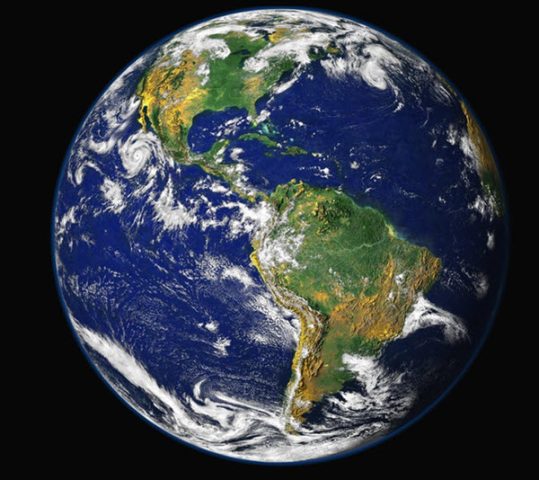Beauty is in the eye of the beholder. That’s an old classic saying, but is it true?
How about garbage? Is garbage beautiful?
Maybe, if you know how to make it “un-garbage”.
Take this year as an opportunity to do the planet a great favor by avoiding the landfill in favor of recycling.
Science Weighs In

In a closed system, like the Earth, where very, very little mass ever exits orbit to enter outer space, the total amount of energy can change from one form to another, but cannot ever be destroyed.
The things we make out of any material, whether simple or complex, natural or synthetic, organic or inorganic, are going to stay right here in our neighborhood garbage dump or even in the ocean when we are done using them.
So, challenge yourself and assess your recycling practices.
Glance around your room for about 30 to 60 seconds. Try to imagine the length of time the items you see will remain in a useful condition. This length of time is called ‘the useful life of an asset’ by the United States Internal Revenue Service.
If you see a lot of things that can be used for a long time, then that’s great! However, if you see more things with lower useful life, then that’s going to be a problem.
For example, gadgets and other products of technology are great when they are new. They are useful and enjoyable to use. Once newer and more innovative devices are introduced, your gadgets become less and less useful.
Removing the old technology, sometimes called e-waste, is a huge problem in both personal and business settings.
Getting Practical
Practice makes perfect. Now, that’s not quite correct as only perfect practice makes perfect. Imperfect practice makes imperfection and that is the recycling system of today. We are, as a whole, still uneducated on the correct recycling procedures.
For example, what is the negative result that comes from single-stream (unsorted) recycling?
The answer is often unsorted trash put in the recycle bin that doesn’t end up getting properly recycled at all.
How and Why to Recycle the Weird Stuff
If you’re not sure where to start with recycling, here are a few tips you can use:
Aerosol Cans– Valuable for their steel, they may go in a bin or taken to a recycling center.
Car Batteries– Valuable for their lead, you can turn them in for money at a scrap yard.
Pet Fur– Valuable for its ability to absorb oil, you can donate them to proper institutions. Pantyhose– Valuable for its nylon, they can be repurposed as well as recycled because they are stretchy and strong.
Vegetable Peels– Valuable for making dirt, you can turn them into fertilizers.
See Also: How To Recycle Copper Scrap
Disasters Spell Disaster for Recycling

When destructive natural causes wreak havoc in a certain area, caring for survivors, preventing diseases, and restoring health and safety services as soon as possible are top priorities. The most vulnerable segments of society suffer deeply in times of natural disaster and unfortunately, there’s a disparity in the fair distribution of resources and aid. Removing damaged and dangerous remnants, even when help arrives swiftly, can still take all too long to accomplish.
Because there are so many things we have to deal with during a natural disaster, recycling isn’t given much priority. There’s not enough room to add a recycling mandate on the clean-up crews’ list of responsibilities and this can spell bad news. There’s the risk of exposure to black mold, sewage contamination or storm residues.
When times are okay and we’re not dealing with any disaster, we hardly think about access to clean water and air. We enjoy uninterrupted services and access to the goods we want to buy and use. The only time we think about and appreciate those things is during a natural disaster.
This year, don’t wait for a disaster to strike. Start doing better recycling practices to avoid regrets later on.
See Also: 10 Ways to Enjoy a Zero-Waste Lifestyle
The Future is Now
We said progress and progress we shall have.
Waste can become a resource and a path for revenue. Since the concept of recycling has improved over the years, it’s now making more of a difference than ever before.
That’s the good news.
Ecologists, environmentalists, and ordinary people who participate in increasing society’s awareness on recycling continually work hard to improve the quality of the recycling process. They put an effort to let in more types of products, process more substances, and form new goods out of old materials.
Students in college programs majoring in ecology and environmental studies in the U.S. and abroad are working hard before and after graduation to contribute to our sustainable future.
Garbage is beautiful when it is the topic of a positive problem-solving conversation. The infographic below has a number of salient talking points to get us speaking (and listening!) together about caring for our big blue and green planet.
Let’s recycle and be smart!
Source: It’s Not Trash
The post Your New Year’s Resolution: Better Recycling Practices appeared first on Dumb Little Man.
from
https://www.dumblittleman.com/recycling-practices/

No comments:
Post a Comment